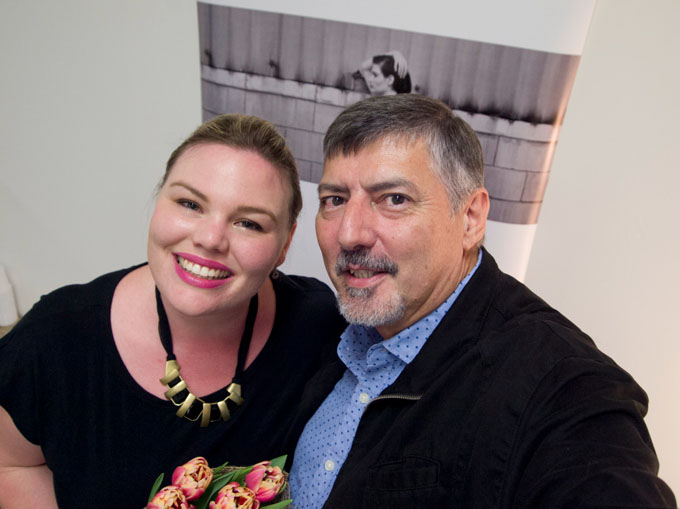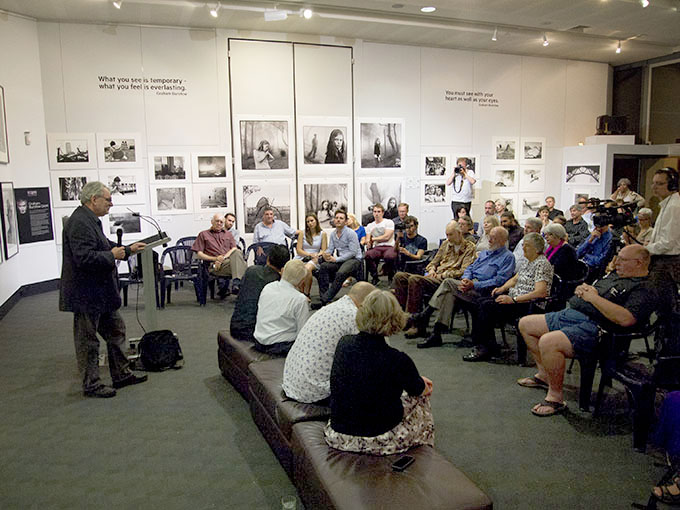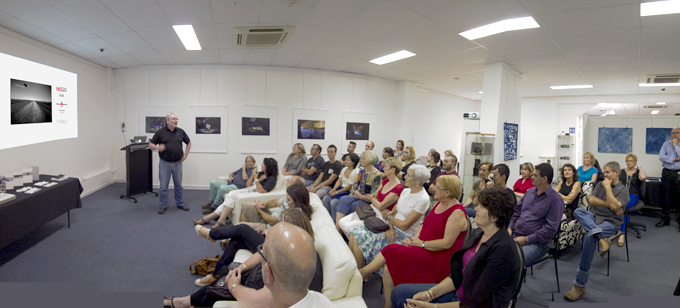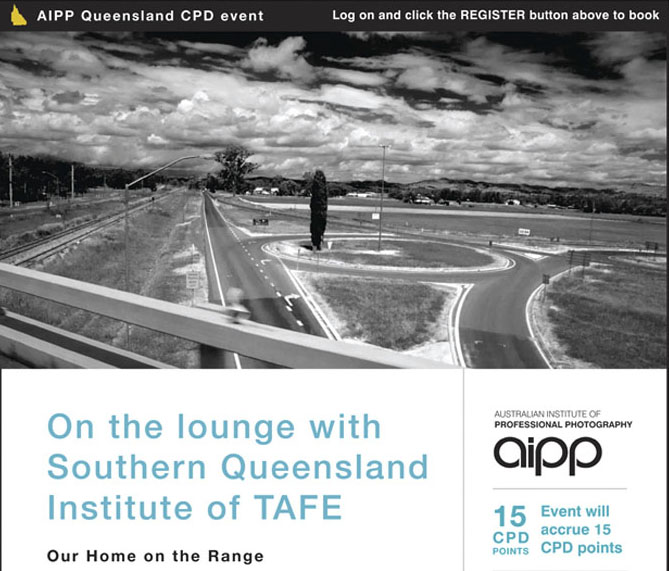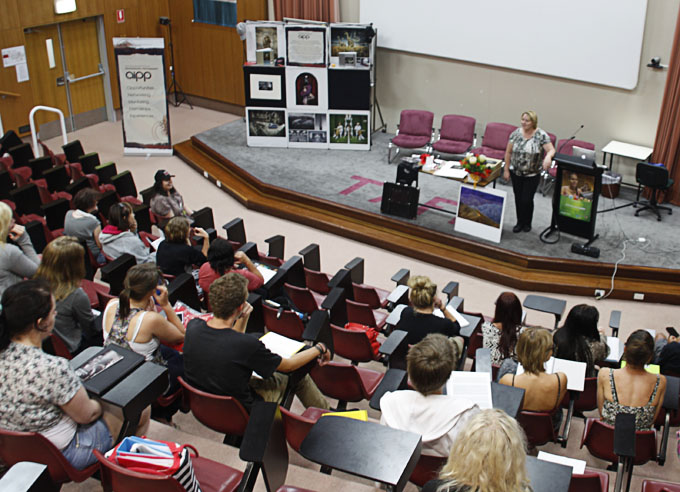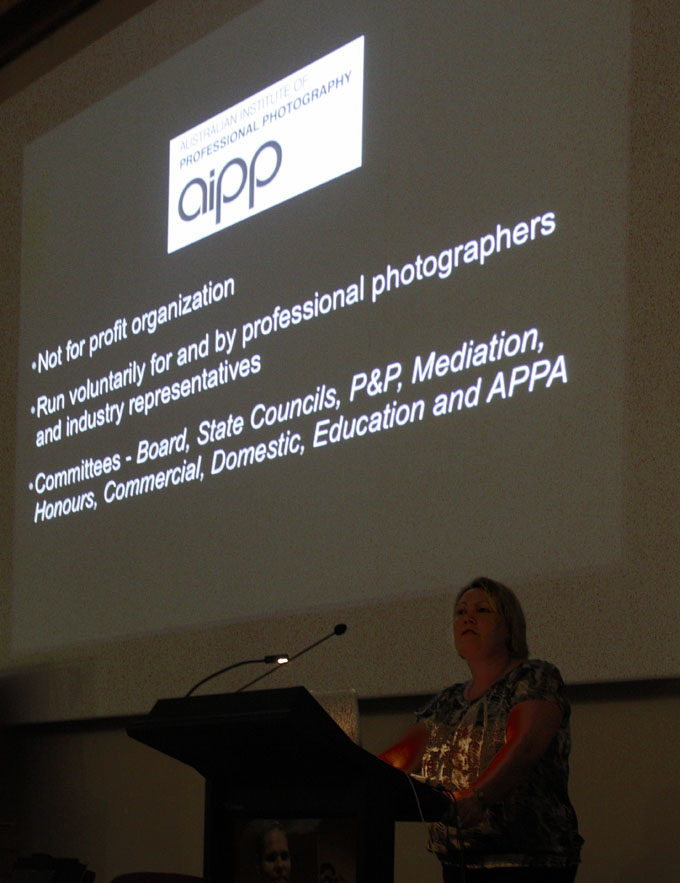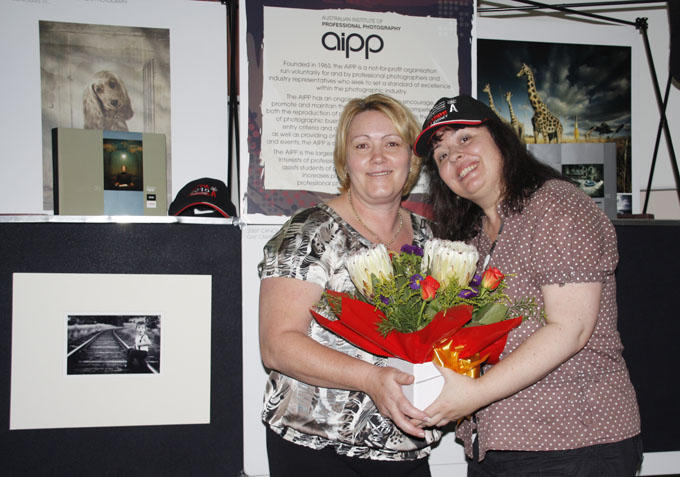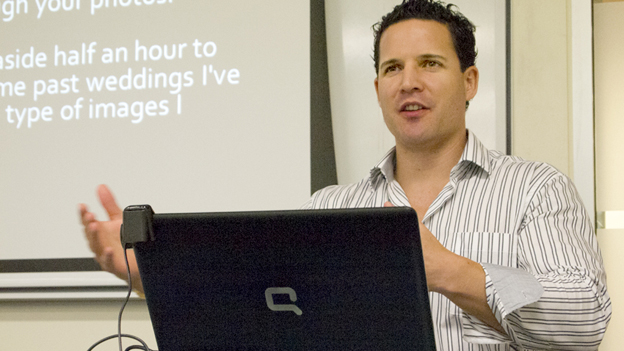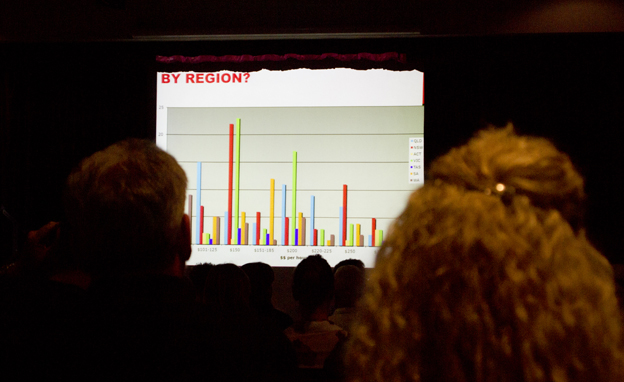Posts Tagged ‘AIPP’
PETER EASTWAY – The New [Photography] Tradition
.
A box came in the mail the other day and in the box was a book from the photographer Peter Eastway. I have known Peter for over 35 years and have followed his many and varied careers – as a photographer, editor and publisher, darkroom and digital Guru, AIPP advocate, photography commentator, judge, lecturer and mentor.
Our paths crossed many times as our interests, activities and creative pursuits were very similar. Over the years Peter published more than a few stories about my work as well as articles I wrote for his magazine Better Photography. Around 1990 Peter was invited to come on my Imagery Gallery Photo Tours to central Australia and Africa to enthuse and inspire the photographers on the tour.
When monochrome photography and the darkroom re-emerged in the 1980s as an exciting ‘new’ trend in the professional photography awards scene Peter became interested in my work. At the time my B&W photographs had on two occasions won the AIPP Australian Professional Photography Awards ‘Highest Scoring Print in Australia, one of them was a 10”x8” contact print. I had also won categories in the Australian Hasselblad Masters Awards.
Peter came to my darkroom in Toowoomba, witnessed my technique, and published a Better Photography story about my technique. One of the main aspects of my work at the time was my use of Leica 35mm cameras and a printmaking style that employed what I called ‘dramatic theatrical effect’ by utilising very heavy burning-in and local dodging.
.
Within a short time I found my entries in the AIPP Awards coming up against Peter’s prints and some of his images were even made on photo tours that he had undertaken for Imagery. One year he won the AIPP Professional Photographer of the Year – I was the runner-up. Since then my partner Victoria Cooper has referred to Peter as #1 and me, #2!

AIPP Australian Professional Photography Awards with one of Peter’s Professional Photographer of the Year award winning photos of Africa on the cover
.
When you get to know Peter you quickly understand his capacity for grasping ideas and knowledge, assimilating into his process and then to make images that are uniquely his own.
Back to the book… I turned the opening pages and read Peter’s introduction for ‘generational change’ in photography. He challenges those who have fixed ideas about emulating the great past masters like Adams and Weston and how digital photography has transformed the photographic image and the possibilities available to enhance the way the subject is presented. What follows in the book are very detailed reviews of the ‘making’ of Peter’s images over the years including his transition from analogue to digital. This book is a handbook on Peter’s process and also a manifesto where he claims the establishment of a ‘new tradition’ in photography.
I turn a few more pages to the first photograph he discusses and dissects. To my surprise Peter acknowledges Eddie Ephraums‘ and my technique as having a significant influence on his B&W work. As I have already said Peter’s way is to grasp, master and go far beyond the initial inspiration. In this way he has come to lead a whole new representation of the lens-seen reality and created for the viewer images of the mystical and sublime. Whether it’s a landscape photograph, an ancient architectural form or a portrait Peter makes images that are seductive to behold, ponder and visually explore.
There is no doubt that he now inspires new a generation of photographers and created disciples and followers for whom this tome will be a ‘book of revelations’, a Bible for those whose wish to understand the eye, the process and the aesthetic of the photographer.
If there is a new tradition and Peter’s work will no doubt continue to influence photographers but his never-ending exploration of the visual world and how the idea of the human seen reality can be transformed through capture and rapture in processing will continue to advance the art of photography.
What interests me is that when I look back at the photographs I was making in the 1980s and 90s I didn’t think at the time about being a follower of a particular ‘tradition’. I just did, as I still do now, what seemed appropriate at the time. Perhaps Peter’s motivation is the same and the only ‘tradition’ that we follow is the constant renewal of the discipline by progressive practitioners…
Thank you Peter for a copy of your book … and for the opportunity to appreciate and consider your work.
Doug Spowart
May 20, 2019
.
To read more and order Peter’s New Traditions Book –
CLICK THE LINK: Better Photography Online Shop New Traditions Book
.
HERE’s SELECTION OF MY MONOCHROME WORK FROM THE LATE 1980s and EARLY 1990s …
.
Images and text © Doug Spowart
..
.
This work is licensed under a Creative Commons Attribution-NonCommercial-NoDerivs 3.0 Unported License.
.
IAN POOLE photographer: eulogy
IAN POOLE photographer: eulogy by Doug Spowart
I was over in Wellington New Zealand attending the Photobook NZ conference when our mutual friend Simon Woolf came to tell me that Ian had passed away. Vicky and I had visited Ian and Louise at the Mater Hospital a couple of weeks ago and while Ian was in a difficult place we shared some past experiences. We spoke excitedly about how Ian came out of hospital recently to open ‘Floating’ at Woolloongabba Art Gallery. It was an important occasion as the exhibition featured work by his long-term friends Glen O’Malley and Yoshiteru Asai as well as artworks by Yayu, Ken Yamane’s grand-daughter.
Ian Poole and I shared quite a chunk of history – On hearing the news whatever I was to do that day in Wellington, and my flight home to Brisbane, my thoughts were with Ian, Louise, Nicola and Denise. What follows is a fragment of our connections and things that I remember about the guy…
My earliest memory of Ian was in the mid 1970s when I met him as an employee of Kodak in Brisbane. Ian had formed a commercial photography partnership with Greg Minns and I served him in my early sales position behind a wholesale warehouse counter in the Fortitude Valley head office. Over time I was to learn of Ian’s pre-commercial work as a part-time wedding photographer for some of Brisbane’s significant studios.
Ian Poole went out on his own in 1976 with the business name ‘Ian Poole does Photography’. He shared a studio in an old church in Warren Street, Fortitude Valley with commercial photographer and AIPP devotee and then Federal President David McCarthy. From there good wine, cigars and Fiats were funded through a diverse range of commercial commissions.
Ian and Denise were married and soon after Nicola was born. A long-term relationship with documentary/art photographer Glen O’Malley strengthened along with his interest in photography beyond the ‘job’ – for him photography was more than just what you did to earn a living.
Ian Poole and the IAP and the AIPP
Ian joined the Institute of Australian Photography (now AIPP) in 1975. An interesting bit of information about Ian is that he entered the very first Merit Awards (APPA) in 1977, and was awarded a Merit for a high contrast photo of a fuzzy hairstyled, seated, saxophone player. I remember that photo well.
In reflection, I always remember Poole being involved with the AIPP in some capacity either at state division level and in the late 1980s on the National Board. During the 1980s I served with Ian on the Queensland Divisional Council and remember many council meetings at Imagery Gallery that finished with us discussing the meaning of life and photography. Together, we also contributed to the development of education and training for photography in Queensland and served on many Arts Industry Advisory Council and Curriculum development committees.
Early exhibitions of his work
His interest in personal photography, and in particular the female nude, led to his work being presented in exhibitions. In 1984 I curated an exhibition entitled ‘5 One man shows’ in Stephens Gallery in the Brisbane City Hall, which included a selection of Ian’s nudes. Later in 1990 his first solo exhibition ‘Anonymous Torsos’, was held in Imagery Gallery (a gallery run by myself and my mother Ruby). He also participated in many group shows in galleries in Australia and Japan.
The Japanese connection
Ian made connections with Japanese photographers through his co-ordination of AIPP events in the early 1980s. This led to an exhibition of 13 photographers organised by Ian and hosted by artist Rick Everingham in his Brisbane studio during Expo 88. Poole followed up this exhibit with an exchange show, ‘A shot from down under’ at Design Expo in Nagoya, Diacolo Gallery in Osaka and amazingly in the Kodak Salon, the Ginza, Tokyo. Ian coordinated a tour for the participating Queensland photographers who spent about 3 weeks in Japan travelling with the exhibition, attending the openings, staying with the Japanese photographer’s families and experiencing Japanese life and landscape.
Working for the Queensland Government
By the early 90s photography was changing and the Queensland Government reviewed all their departments that had employed staff photographers. They decided that only 3 photographer positions would be funded into the future. The 3 positions were advertised in the public domain and Ian, not only applied, but also won a position. It should be noted that Ian around that time completed by part-time study a Graduate Diploma of Visual Art at the Queensland College of Art. The topic of his research was portraits of artists.
Australia Council Residency and sessional teaching
Poole’s interest in the art of photography needed to be pursued alongside the day-to-day grind of professional work. After completing the Graduate Diploma he sought and was awarded and Australia Council Artist in Residency in Tokyo where he immersed himself in his passion for portraiture and Japanese culture.
Ian’s assistants, peers and mentorees
Ian always had assistants, mentored those seeking advancement of their skills, as well as sessional teaching at the Queensland College of Art and the Queensland University of Technology. His endorsement of professional practice meant that through his patronage and support many of the Institute’s significant photographers came into the AIPP fold.
Poole and the Australian Professional Photography Awards
Soon after I became Chairperson of the APPA’s in the 1990 I championed the development of judge training and the need for judges to have extended their understanding and appreciation of the art as well as professional practice.
Into this space I brought Ian Poole – he had the ideas, debating skills, knowledge and understanding of art to help with this aesthetic transformation of APPA. His dedication to ensuring that the entrant who made special works, in Ian’s opinion, got a fair hearing. I’ve spoken to many awards entrants, at all levels, and they have a story about Ian ‘going into bat’ for one of their works.
Ian skills as a judge and inspirational speaker were recognised by New Zealand Institute of Professional Photography and he became an Australian judging ambassador for the NZIPP Awards.
Support for TAFE Toowoomba and Nicola’s study
As a teacher in the photography programs at the TAFE college in Toowoomba I was always privileged to have Ian and many other professional photographers and artists carry out the final holistic assessment of student work as well as endorse and support my institution.
When Ian’s daughter Nicola wanted to pursue photography Ian arranged to bring her to Toowoomba suggesting this is where she needed to be. She enrolled and over the next two years she completed her diploma studies in 2003 with the Graduating Student of the Year Award.
Foto Frenzy
When Ian formed Foto Frenzy with a small group of photography identities including Darren Jew, Tony Holden, Cam Attree and Susan Gravina from Brisbane Camera Hire I was honoured to open the enterprise. Later, Vicky and I were invited as Artists in Residence for a month in 2013. While we where at Foto Frenzy we participated in workshops, re-configured the premises into a camera obscura, made 10×8 Polaroid Impossible Project images and held an exhibition of our photobook and image work.

Ian Poole, Diane Byrne and Eric Victor at the State Library of Qld looking at prints by Richard Stringer
John Oxley Library donation
One of many things undertaken by Ian that many may not be aware of is his donation of his professional photography archive to the John Oxley Library at the State Library of Queensland. For quite a few years he has been going into the Library to unpack and catalogue the work so that it can be successfully searched and retrieved into the future. Now much of Brisbane’s cultural history from buildings to fashion, ballet and theatre, portraits of the rich and famous and those curious dated art-directed advertisements of the 1970s and 80s, are there as a document of our times.
I’ve been around professional photography for nearly 50 years and I’ve seen the disappearance of numerous professional photographers and their businesses – but what of their photographs? Lost? – Not Ian’s work, which he has given in an altruistic act for Queenslanders and their history.
In conclusion
I was always fascinated by Ian’s business name – ‘Ian Poole does photography’, we now know he did much more…
At this time I, and many others, will reflect on and remember Ian Poole
– his legacy will continue on in all of us.
Doug Spowart
NOTE: I hope that all this is correct – should their be any errors I am happy to make the corrections
What follows are some published works relating to Ian, some links and some other images…
Ian Poole’s website: https://poolefoto.wordpress.com/
PHOTO.Graphy Journal – Ian Poole Guest Editor
Ian Poole curated show at Qld Centre for Photography
f11 Online magazine: Ian Poole folio
https://wotwedid.com/2012/05/17/ian-poole-aipp-on-the-lounge/
Some images by or about Ian…

Ian Poole and Kev Hudson judging the 1982 Brisbane National Exhibition of Photography at Imagery Gallery
.
.
Farewell Ian….
.
.
.
.
IAN POOLE: AIPP On the Lounge
Ian Poole is well placed to have an opinion about fine art photography and collecting photographs. He has been a major player in professional photography in Brisbane for nearly 40 years and is a respected AIPP judge with yearly invitations to also judge the New Zealand Institute of Professional Photography awards. Despite his professional photography connection he has been a part of a sector of the Queensland photographic art scene that extends from the early 1980s with Imagery Gallery, later with the Photographer’s Gallery and more recently with the Queensland Centre for Photography. He has completed a Graduate Diploma in Visual Arts from the Queensland College of Art and has been awarded an Australia Council residency in Tokyo. Adding to this he has curated photographic exhibitions in Japan (of Queensland photographers) and exhibitions in Australia (of local and Japanese photographers).
So when Poole offers commentary on aspects of the photographic art world of Brisbane and Queensland it should be something of an opportunity to connect with his extensive knowledge of the genre. Recently as part of the AIPP ‘On the Lounge’ lecture series Ian Poole presented to an assembled audience of around 40 a dissertation entitled, ‘Have you ever wanted to collect photographic art, or be collected as a photographic artist?’
Ian Poole began his presentation by reviewing recent art auction records for photographic artworks including those by Adams, Sexton and Dupain. Thousands, hundreds of thousands and even millions will change hands for well-known and rare works. The recent phenomena of Nick Brandt’s African work,which had been shown only weeks earlier in Brisbane, attracted some discussion. Perhaps some in the audience felt a little inspired by the possibility that, if they could enter the fine art field, that there was recognition and the possibility for a significant income to be made.
Poole introduced his collection of images that were hung on the walls and laid out on tables before the audience and discussed their histories and stories. For him the concept of ‘provenance’ elevated the importance of each work. A small Dupain image of the interior of the National Gallery in Canberra made during its construction was linked to his encounter with the work in a Brisbane gallery where it was purchased for a few hundred dollars. His most exuberant discussion related to a Joachim Froese diptych acquired when he swapped it with Joachim for a 4×5 enlarger. An expanded provenance trail led to it being loaned back to Joachim so that it could be displayed a QUT exhibition of his work.
A long-term friendship with north Queensland photographer Glen O’Malley presented some interesting provenance stories. O’Malley is not fully recognised for the significance of his practice in Queensland – he could probably claim to have had the first ‘photographic art’ exhibition in this state in the mid 1970s. Poole presented to the audience an image from O’Malley made as part of the Queensland Art Gallery’s 1988 Journeys North commission. The 20×24” black and white photograph showed a scene in Poole’s home where the O’Malleys were having dinner. The image was part of the accepted images for the Journeys North show and was subsequently published. Somehow Poole’s own life had become art photography itself.
Another photography collaborator presented by Poole was John Elliott. Well known for his documentation of country and western music and its heroes and doyens including Slim Dusty, Chad Morgan and Jimmy Little, Elliott is an enigmatic character of the photography scene. Ian spoke of John’s most recent show Gifted Country at the Caboolture Regional Art Gallery and his photobook publishing ventures. A recent journey to Townsville that Poole had shared with another of Queensland’s enigmatic photographers, Maris Rusis, resulted in a body of work by Rusis that dealt with the décor of budget north Queensland motel rooms. These small and fine gelatin silver fibre B&W prints presented to the audience the fact that traditional values remain key to some workers who continue to practice analogue photography in a digital world.
Question time brought up some difficult truths – Why does the Queensland Art Gallery/GOMA not seem to be collecting photography generated within this state? Did they ever collect? Some discussion related to the archival needs for conservation framing and presentation.
As a conclusion to the presentation Poole spoke of the way in which he and his photography acquaintances swapped and shared their works, and how much of his collection was built around the generosity of fellow photographers and their desire to share. He held a bundle of his own gelatin silver images up before the audience and made an offer that ‘you can have one of my prints this evening – and send a print to me as a swap. Start your collection this evening …’
While Ian Poole began his presentation with a review of the overtly mercantile auction scene, it seemed that his passion about photography, photographs, friends, shared experiences and the meaningfulness of the provenance of the works, that these things could not be commodified. He spoke of his collection of photos, books and ephemera as being an entity that would be bequeathed to his daughter Nicola, also a photographer and present at the talk. Through the audience he directed to Nicola to ‘treasure and look after these things … they were important, valuable – not only as the stories they depicted through their image on the front-side of the print, but also of the back-story of their origin and collection.’
There is no doubt that Ian Poole’s passion for photography and his understanding of how it operates at a personal and cultural level is something that was shared and communicated on this evening. And those present will be inspired to develop a new appreciation of what photographs are and what they can say about the human condition.
Doug Spowart May 20, 2012
An unusual meeting – Face-to-Face with an early portrait of one’s self – circa 1982 found in Poole’s collection
AIPP ON THE LOUNGE: SQIT Toowoomba April 11, 2012
- AIPP – On the lounge SQIT, Website invite
On this evening the SQIT Photoimaging team hosted two events for visiting AIPP members and invited guests. The visit began with a ‘High Tea’ catered for by the SQIT Hospitality team – sumptuous treats were accompanied by tea and coffee. Those attending settled down to conversation with each other in the convivial atmosphere of the ‘Futures’ Restaurant. Coffee Shop
At 5.30 stage two of the visit began with the open of an exhibition of photobooks and artists’ books made by SQIT Photo students over the last 5 years. The show was opened by Queensland Division President Jan Ramsay, who as a past student of an art photography unit, and also part of the end-of-year professional assessment team at SQIT, had experienced the Toowoomba TAFE Photo team at work.
The books on show ranged from Shanea Rossiter’s ‘Inspiring Women’ book of portraits to Cathy Smith’s book ‘Junked’, a documentary comment on our disposable society and Lorraine Seipel’s political message in the book ‘Song for the future’. The exhibition was curated by Victoria Cooper and Doug Spowart for the Queensland Festival of Photography.
The third stage of the program included presentations by the three full-time staff of the photo team – Rachel Susa, Alison Ahlhaus and Doug Spowart. Each spoke of their connection with photography from both the personal and professional context. Doug spoke of the 20-year history of the photo Diploma and Certificate courses at SQIT and the Photoimaging teaching methodology.
The session concluded with a PowerPoint show presenting a selection of images and comments from past students. It was interesting to hear of the experiences of these past students about studying at SQT as well as their achievement in photography. The past students included: AIPP Chairman of the Board Alice Bennett, Nicola Poole, Katie Finn, Lisa Mattiazzi – National Gallery of Australia imaging specialist, Lydia Shaw who works in many areas including photography and teaching in Dubai, nationally acclaimed commercial photographer Damien Bredberg, Sue Lewis – APPA Team Manager and recent graduate Shanea Rossiter who is establishing a business in Warwick.
The Past Students PowerPoint show (PPS) can be downloaded from the www.cooperandspowart.com.au website – It’s a 30.9 mb download but presents an interesting overview of where SQIT students go to and the amazing achievements that they have. CLICK <http://www.cooperandspowart.com.au/2_PLACES/OtherBooks/index.html> Then select the PowerPoint AIPP OTL picture.
The evening concluded with the video fusion show “Dance-on’ by 2011 SQIT Diploma Student of the Year. “Lindsey’s video represents the future of photography” said Doug, and added, “that the stilled image is dead!” The point was not debated, but in the context of an industry that has gone from wet darkrooms to light rooms and digital output in the last ten years everyone left knowing that anything is possible.
Cheers Doug
Judging professional photography: MSIT, Brisbane, March 24&25
The 2012 AIPP Queensland Professional Photography Awards.
I’m sitting on judging panels for the landscape and documentary panels of the 2012 AIPP Queensland PPY Awards. The work is challenging and diverse and the judging panel capable and opinionated. My mind wanders to thoughts about photography, its assessment and critique.
The social scientist Pierre Bourdieu wrote many things about photography. Many photographers would take particular exception to his essay on ‘Photography: A Middle-Brow Art.’ But some of what he says bears a strong and salient connection with the way photographer’s debate, discuss and judge their work. Bourdieu states,
” It is no accident that passionate photographers are always obliged to develop the aesthetic theory of their practice, to justify their existence as photographers by justifying the existence of photography as a true art.” (Bourdieu 1996:98)
Whilst his statement may relate to all kinds of photography from the camera club to the teaching institution it connects, to my mind, most directly to professional photography. Shortly after the time he wrote the original French text (early 1990s) I was not only a fervent participant in all kinds of photography competitions but also the chairperson of the AIPP Australian Professional Photography Awards. I witnessed and perhaps even guided the transition of the APPA, as it became known as, into the form that it now takes.
Founded in 1977 The AIPP National Print Awards were judged with an interest in the work being suitable and relevant to professional products for clients. Prints were glorious colour, 16”x20” flush mounted and were a celebration of technique as well as saleability. Each year 300~500 prints would be judged by the doyens of the industry and a few rising stars. In 1984 I sat on one of these judging panels alongside the big names of professional photography at the time – I felt quite small.
By the end of the 1980s new influences were invading the professional scene. John Whitfield-King and others of his persuasion were creating a space for documentary approaches to wedding photography informed by Henri Cartier-Bresson and Elliott Erwitt. Areas of photographic practice such as illustrative and landscape were emerging and along with them was a recognition of art photography from the American scene by practitioners like Ansel Adams, Harry Callahan, Lee Friedlander, Arnold Newman et al. Black and white prints with Leica-esque full-frame black fuzzy borders became the emergent trend and prints became small and fine on white mount boards. Along with Paul Griggs, Jeff Moorfoot, Lyn Whitfield-King, Peter Adams and Robert Billington, I also was also one of this new guard.
Photographers began to present images from their own personal photographic exploration – subjects that excited and invigorated their practice. These were photographs made by photographers – for photographers. The judges were excited by this work as well and awards were made that celebrated inspirational photography. Each year new work became more and more detached from the previous client-based assessment, and the new paradigm became the engine room for photographers to experiment and push ideas about what professional photography could be and also what clients may want. All this change was not without its detractors. The photo press and newsletters published the laments by some about the loss of industry and the self-indulgence of those engaged in it.
Despite this, professional photographers did embrace the awards process with such enthusiasm that larger entries necessitated extra judging rooms, days of judging and an army of judges and event team volunteers. Early in my chairmanship I undertook a national judge training program with the intension of filling the judging ranks with new judges, and in particular, evening up the gender balance of such panels. The term ‘judge training’ implies some kind of conditioning process where the participant is shown how to spot and reward certain standards. This was not the route that I chose. My philosophy was related to the recognition that all candidates start with a significant understanding of photography and that what they needed was to (1) understand the APPA judging system of team-based scoring and debates, (2) come to know and practice discussion and debate techniques, and (3) grow through the process accepting it as not only one which is about making judgements, but also its educative nature for the judge and the entrant alike.
In time we achieved much of what we set out to do. The judging team became more representative of membership – gender balanced, younger, from the regions as well as the city. APPA as a system during my time as chair cautiously welcomed-in digital output, imaging and image enhancement – something we take for granted now but an area of significant consternation in the mid 1990s. Not to mention each year’s crop of award winners that are celebrated in the prestigious form of the Awards Book. Additionally we should not forget that the APPAs were originally, and still are an accreditation system to recognise and reward the professional photography skills of AIPP members through the awarding of APPA Associate, Master and Grand Master honours. At one time you could count the number of APPA Masters on the fingers of two hands – they were a rare-breed indeed. Now the AIPP is replete with masters and Grand Masters may need more than two hands to count. In my opinion what it takes to be a Master is no less now than it was 20 years ago – it’s just that the general standard of professional photography as an innovative and expressive form of communication has grown exponentially.
Over time the APPAs have grown beyond our imaginings of the 1990s into the mega event it is today. States such as Queensland have their local awards judgings that have entry numbers exceeding the national entry only 20 years ago. Professional photography practitioners from this country have, for over ten years, won every major international award, had top ten listings in numerous disciplines and travel extensively as guest speakers and leaders of the industry internationally. Some of this acclaim comes from the spark that was set by the team that was APPAs in the 1990s. Most of the names and contribution that these people made have now gone. I think of David Puddefoot, Mike Woods, Ian Hawthorne, the ‘godfather’ Ian McKenzie, Malcolm Mathieson, Jeff Moorfoot, Ruby Spowart, Victoria Cooper and the current Chair David Paterson. We owe these individuals and a host of other committee members of that era including Paul Griggs, Robyn Hills, William Long, Ian Poole, for the foundation that they helped make so that APPA, and the state events could be what they are today.
It has been some time since I have judged at an APPA style event. As I sat on the judging panel I reflected on the history that has brought us to this moment. It felt good – and I was able to contribute to great discussion about some amazing imagery. Photographers have embraced the theory and aesthetics of their art and justify it through the most interesting and informative processes.
.
Doug Spowart
.
Bourdieu, P 1996, The Rules of Art: Genesis and Structure of the Literary Field, Stanford University Press.
AIPP Student Event @ SQIT
Sue Lewis, as part of her AIPP Education Liaison attended SQIT and made a presentation to photoimaging students about the professional photography industry and the peak industry body – the Australian Institute of Professional Photography. The presentation, on the 22 February, consisted of print displays, AIPP books, PowerPoint and video show. Sue was assisted by AIPP Queensland Divisional councillor Tony Holden.
Sue spoke of the AIPP’s history, structure, services and events. The Canon AIPP Australian Professional Photography Awards in Melbourne and the Nikon AIPP Event in the Hunter Valley were featured as ‘must attend’ events in the coming year. Sue also discussed her own photo history as a SQIT photography student 10 years ago and how she networked and connected with the APP Awards firstly working as a ‘helper’ behind the scenes. She is still behind the scenes however now she is a major manager of the national event.
The response by SQIT students to Sue’s presentation was significant – 8 students signed up for AIPP Student membership on the day – joining many other SQIT students who are AIPP Student members. In appreciation of Sues efforts over the years and her support for students across the nation she was presented with a bouquet of flowers by teacher Rachel Susa.
What is amazing is Sue’s enthusiasm for professional photography and how the AIPP helped her along the way. She called it networking, networking, networking, and having fun with, and through, photography. Something I’m very familiar with – I joined the AIPP as a student nearly 40 years ago – still a member and having fun with photography.
Thank you Sue, and, the AIPP…
AIPP QLD ‘Hair of the Dog’ Conference
IMAGES ONLY AT THIS TIME – Texts to follow shortly!!
Murray Fredericks SALT Video GREENLAND Project Sydney New Years Fireworks
11 November: Jan and Mark’s exhibition opening
A wildly exciting exhibition was opened last night featuring the first art photography exhibition by AIPP members Jan Ramsay and Mark Schoeman. The show is presented on the premises of Flute Fine Foods @ 380 Cavendish Road Coorparoo in Brisbane.
In the opening address I made the following comments:
Jan and Mark, as professional photographers and AIPP members, have stumbled upon the ultimate promotional activity in the the form of the art photography exhibition. They have created a convivial environment within the Flute Gallery, they have presented their photographic interests as fine art images of high key flowers (Jan) and female nudes (Mark), they have assembled an eclectic bunch of people and lubricated the conversation with fine wines and good food. Tonight friendships will be made or re-affirmed – participants will propose, make love and feel the joy of living. They will then want their engagements to be photographed, weddings recorded, babies and kids to be documented … The cycle goes on and on.
This evening we are all part of that strategy – So look at the art, be inspired. Consider your options for the future need for a photographer – Or – even just enjoy the moment, the present company and the art works presented here that come from the creative urges of these two remarkable people!
Congratulations Jan and Mark.
Words+portrait photo: Doug Spowart




























